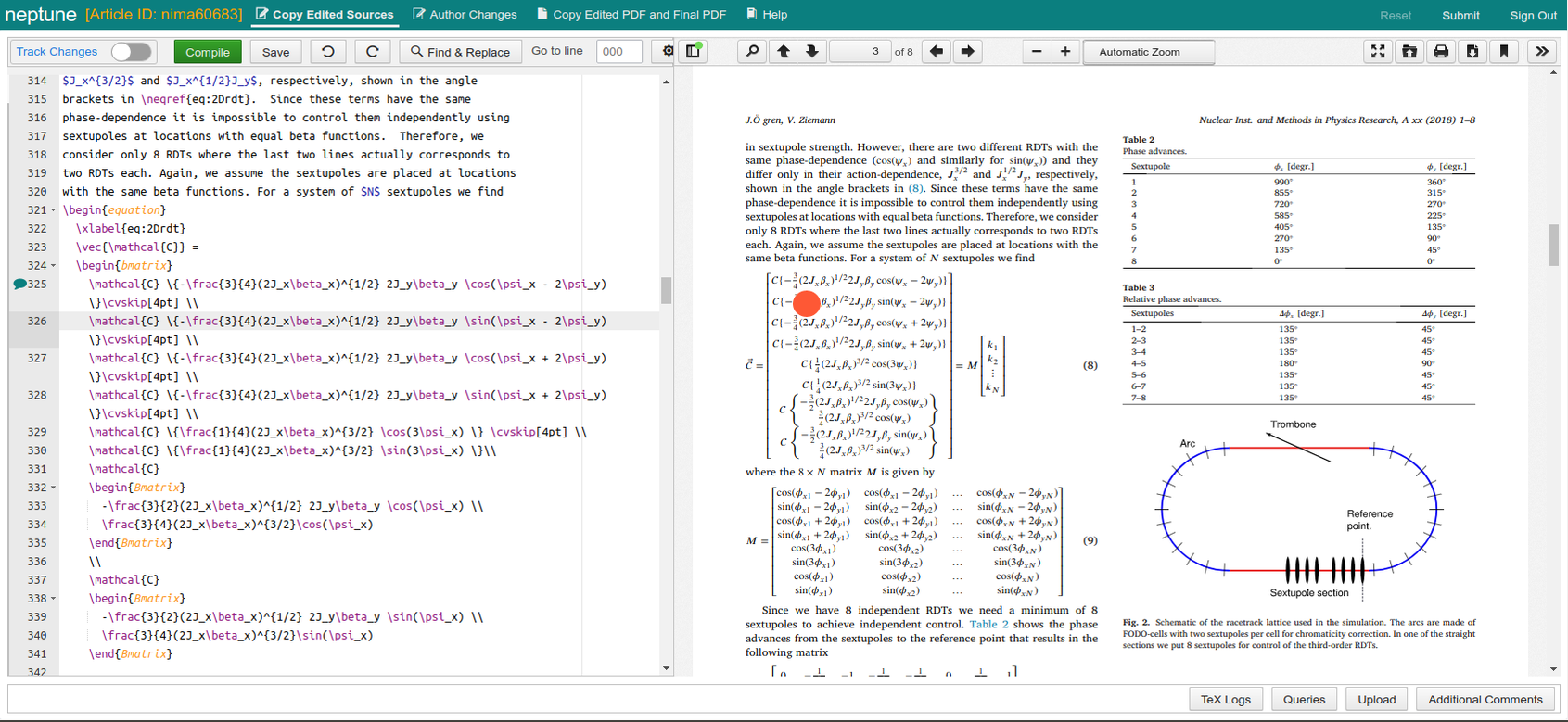Add/remove objects
New objects like
\section{...}, {equation}, {figure}, {table}, cross-references,
paragraphs etc., can be added or removed, which will be shown in the tracker for
later checking and to inform master-copiers. If the objects change any counters, it
will immediately be reflected in the document by automatically re-numbering
the objects and fixing the cross-references when you compile the document
twice.
Synchronized pre/post-edited sources
Pre- and post-edited document sources along with tracker window with hyperlinked
list of edit changes are available. Authors can make a last minute checking and
confirmation of all edits or discard any change at their will. [More on Pre/Post-edited
Sources]
No need for another proof
Since authors edit directly on the LATEX sources and view the final output as in
print/web, no need to request a revised proof or to wait for it which reduces
production time. They can download their edited output in PDF format if they
want.
Source–PDF navigation
One-to-one link between source TEX file to PDF and back are available which makes
it easier to navigate from source to the corresponding location in PDF and vice-versa.
The user need to compile the sources once for this feature to take effect. [More on
Navigation]
Validated editing
Although, authors can edit their sources at their will, author’s TEX code will be
validated immediately during proofing process. Hence, chances for making errors by
authors are almost non-existent.
Functional tracker
A convenient tracker of copy-editor made changes with choice to Reject/Accept the
changes is available. Default is Accept. [More on Tracker]
Error-stop/non-stop modes
PDF generation can optionally be stopped at an error or can be continued till end of
the job without stopping at errors to facilitate authors’ preferred style of debugging.
[More on Error-Stop/Non-stop]
Notes, requests, comments, etc.
Any number of notes, requests, comments, etc., can be added to the document
sources by clicking at line number. [More on Author Notes]
PDF output
At the end of the editing job or whenever they want, authors can generate a PDF
from their edited sources which is exactly like the one when finally printed in the
journal.
Pretty-printed sources
The editor in Neptune renders document source in a well-structured, pretty-printed
and human-readable format which will prompt even the non-LATEX authors to try
editing in the source.
Miscellaneous features
- PDF output has active hyperlinks and bookmarks.
- Any number of Undo/Redo will be supported.
- Facilities available to add comments, instructions, etc., to queries directed to authors.
- Search/replace and regular expressions are supported.
- Neptune works well with Raspberry Pi which saves a lot of energy and goes with our environment-friendly production technologies.
